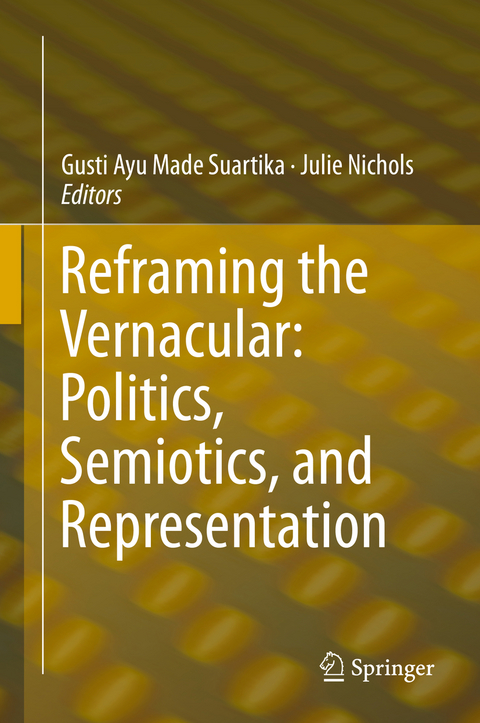
Reframing the Vernacular: Politics, Semiotics, and Representation
Springer International Publishing (Verlag)
978-3-030-22447-9 (ISBN)
The aim of this book is to reflect on ''vernacularity'' and culture. It concentrates on two major domains: first it attempts to reframe our understanding of vernacularity by addressing the subject in the context of globalisation, cross-disciplinarity, and development, and second, it discusses the phenomenon of how vernacularity has been treated, used, employed, manipulated, practiced, maintained, learned, reconstructed, preserved and conserved, at the level of individual and community experience. Scholars from a wide variety of knowledge fields have participated in enriching and engaging discussions, as to how both domains can be addressed.
To expedite these aims, this book adopts the theme "Reframing the Vernacular: Politics, Semiotics, and Representation",organised around the following major sub-themes:
- Transformation in the vernacular built environment
- Vernacular architecture and representation
- The meaning of home
- Symbolic intervention and interpretation of vernacularity
- The semiotics of place
- The politics of ethnicity and settlement
- Global tourism and its impacts on vernacular settlement
- Vernacular built form and aesthetics
- Technology and construction in vernacular built forms
- Vernacular language - writing and oral traditions
Gusti Ayu Made Suartika is Head of international programs at the Department of Architecture, Planning & Development, Udayana University, Bali; Head of The Centre for Cultural Communication and Space (CCCS); and also Head of the Smart City Research Centre. Her research interests in urban planning in developing countries are revealed in her publications. Books include Morphing Bali-The State, Planning, and Culture and Vernacular Transformations-Architecture, Place and Tradition. She has a wide range of academic publications including journals such as Space and Culture, Habitat International, the Journal of Urban Design and the Wiley Encyclopaedia of social Science. Current research includes vernacular architecture and culture, the public realm in Indonesia, and smart city concepts applied to developing countries. She is enthusiastic in dedicating her academic endeavours, research activities, publications, and public works to facilitate the Commons in the formation of physically and socially liveable towns and their built form. Julie Nichols lectures in architecture and sustainable design. Julie is the founder of Vernacular Knowledge Research Group [VKRG] and executive member of the Australian Research Centre for Interactive Virtual Environments. Julie's main research interests link the fields of digital humanities, vernacular architectural history and theorythrough drawing and representation practices. Julie's interdisciplinary research includes:multimodal methods for post-disaster management of built cultural heritage sites; re-conceptualising vernacular architecture; theories of spatial design in Australia and Indonesia. Julie's first monograph, Maps and Meanings: Urban Cartography and Urban Design (2014), traces changing roles of the map in the creation of settlements in Southeast Asian and European cities in 17th& 18th centuries.Julie received commendation for End-User Engagement in 2017 for "The Aceh Method: digitally Distributed Architectural Ethnography in Trauma Mitigation for Post-disaster Reconstruction," and two Australian DFAT Awards for documentation of vernacular architecture.
| Erscheinungsdatum | 01.11.2019 |
|---|---|
| Zusatzinfo | XI, 271 p. 139 illus., 120 illus. in color. |
| Verlagsort | Cham |
| Sprache | englisch |
| Maße | 155 x 235 mm |
| Gewicht | 582 g |
| Themenwelt | Geschichte ► Teilgebiete der Geschichte ► Kulturgeschichte |
| Naturwissenschaften ► Geowissenschaften ► Geografie / Kartografie | |
| Sozialwissenschaften | |
| Schlagworte | Ethnicity and the vernalucar • Globalization and the vernacular • Landscape/Regional and Urban Planning • symbolic Intervention • traditions and culture • Vernacular architecture • Vernacular built Forms |
| ISBN-10 | 3-030-22447-3 / 3030224473 |
| ISBN-13 | 978-3-030-22447-9 / 9783030224479 |
| Zustand | Neuware |
| Informationen gemäß Produktsicherheitsverordnung (GPSR) | |
| Haben Sie eine Frage zum Produkt? |
aus dem Bereich


